Camel-borne vaccines and high-tech data systems: Inside Pakistan’s massive, historic measles-rubella vaccination campaign
Last month, Pakistan undertook one of its biggest-ever vaccination campaigns: 90 million doses of measles and rubella vaccine administered to 90 million children in just two weeks. #VaccinesWork was there.
- 15 December 2021
- 4 min read
- by Maya Prabhu , Huma Khawar

She may be on the frontlines of a historically ambitious vaccination campaign, but the day starts with tranquil ritual for Dehli Bai – milk tea stirred slowly over an open fire inside her desert home. Breakfast over, she puts on a yellow high-visibility vest, crams a matching yellow cap on over her lilac chadar and heads out into the sun-blanched landscape to get to work.
A "Lady Health Worker" (LHW) since 2012, Bai also numbers among the tens of thousands of vaccinators charged with immunising more than 90 million children against measles and rubella during Pakistan’s epic two-week November vaccination sprint.
A campaign like this one is finally only as big as it is small: each locality has its own challenges, demands its own brand of problem-solving.
Here, as elsewhere, measles is a growing threat. It's estimated that 22.3 million children worldwide have missed their first dose of measles vaccine amid 2020’s COVID-19 crisis, creating the largest increase in the number of unvaccinated children in two decades. In Pakistan alone, more than 8,300 measles cases have been reported so far during 2021; 800 children are estimated to have died.
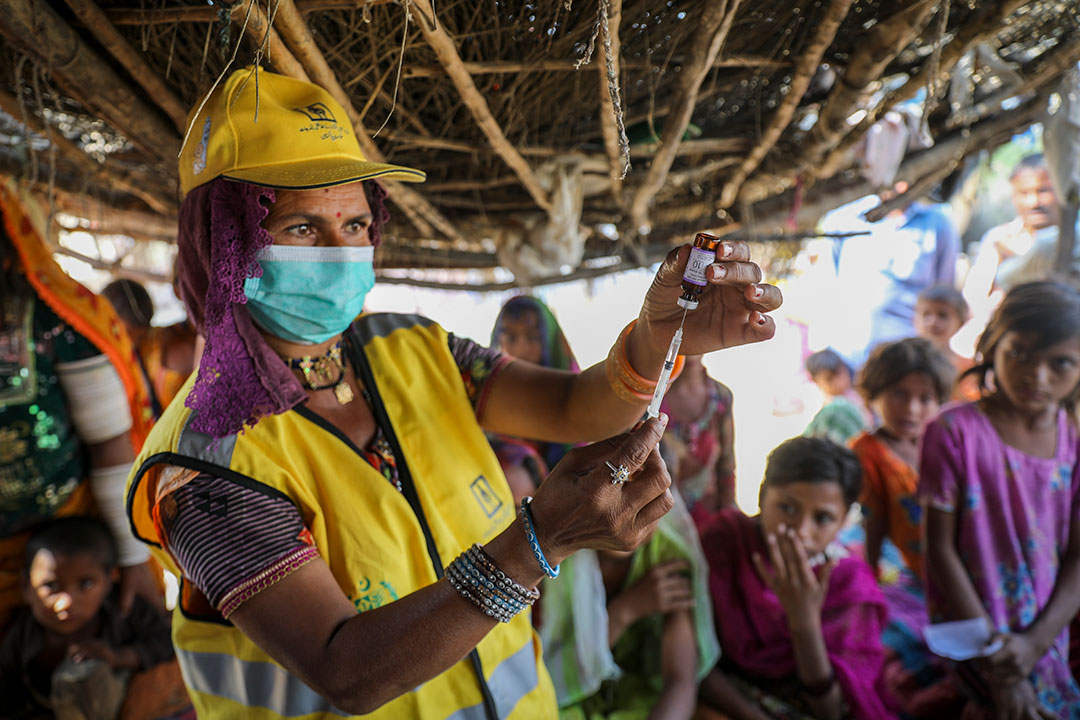
Gavi/2021/Asad Zaidi
“All children in our village are being vaccinated in this MR campaign,” Bai tells #VaccinesWork one warm mid-November morning. “I have been to every house to inform them about the campaign.”
The village in question is Marno Vena, in which some houses are round and thatch-roofed, and others are rectangular and flat-topped, but all built structures are the same ground-almond colour as the baked, level, endless ground.
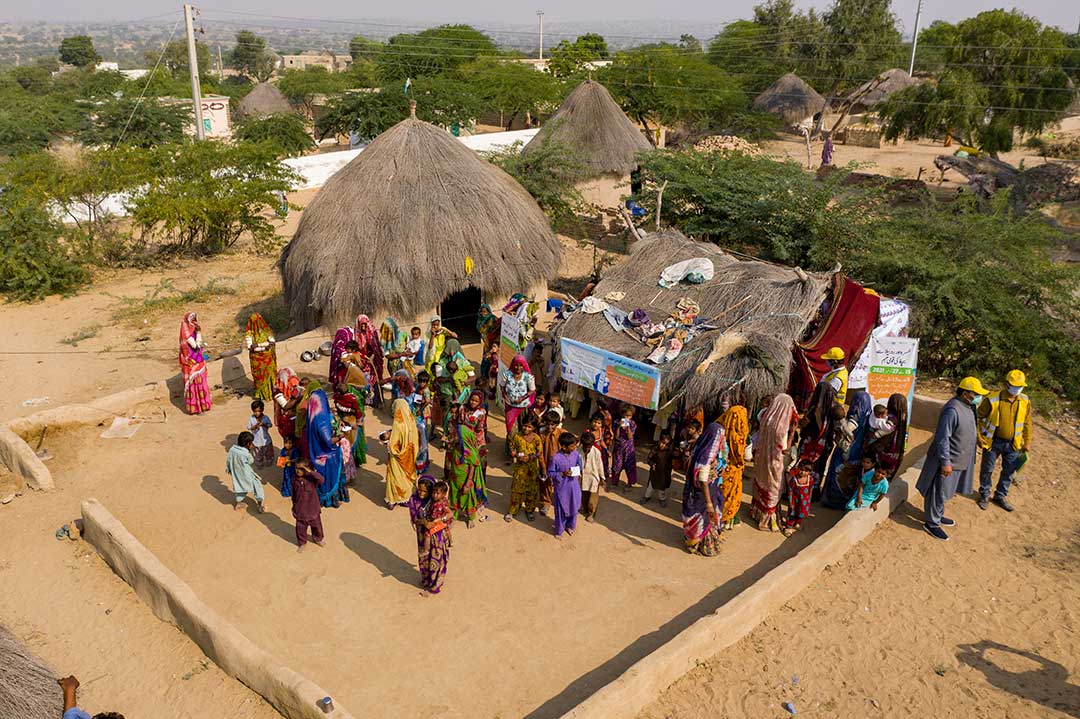
Gavi/2021/Asad Zaidi
Have you read?
“One can call it the remotest district of Sindh province,” says Dr Bharat Kumar, Additional District Health Officer for Tharpakar, sheltering under a low, knuckly thorn tree. “But there are many good things to share about Tharparkar, and one of them is that vaccine acceptance rates are very high.”
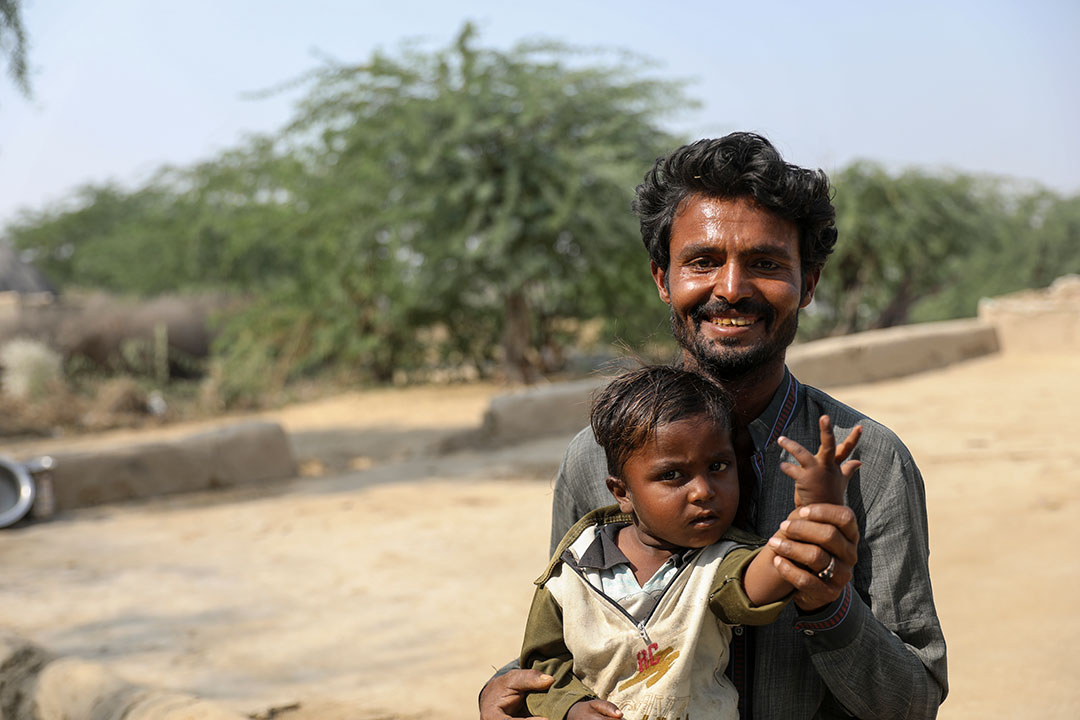
Gavi/2021/Asad Zaidi
Indeed: a sizeable crowd has gathered in the low-walled compound where Bai has set up a vaccination outpost under a thatched sun-shade. Parents cradle kids as Bai measures out a dose, administers the jab; the younger ones, the children aged under five, receive a dose of oral polio vaccine too.
The oldest eligible kids are teenagers, huddled with their friends, laughing and comparing the ink-marks on their fingers that prove they’ve been immunised.
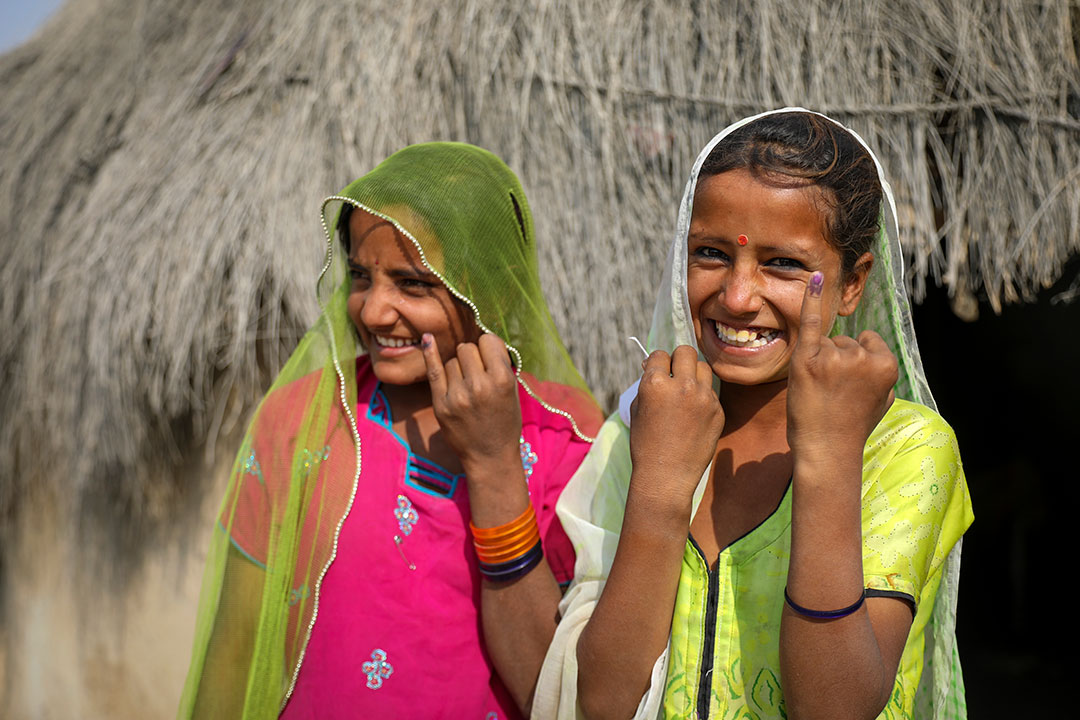
Gavi/2021/Asad Zaidi
If in Marno Vena, one of the remotest nodes of the branching campaign map that spiders in every direction across Pakistan, the immunisation drive has something of the feeling of a village fete, 1,500 kilometres away, at the campaign’s nerve centre in Islamabad, it wears a very different face.
The central control room comes to life under the suggestively digital glow of blue LED-strip ceiling lights and glossy screens. A conference table, the kind you imagine in a war room, is surrounded by high-backed wheelie chairs occupied by busy people – the Expanded Programme for Immunisation team, Polio Programme staff, specialists from WHO and UNICEF – for whom this is the high-stakes culmination of many months of meticulous planning.
A six-screen data display spans the facing wall: cumulative vaccination coverage figures tick up in real time towards the 91.5-million-child target; MR vaccine stocks tick down. Qualitative indicators – whys and why-nots – trickle in from low-coverage areas. Among the people in the room, whose attention flicks from their phones to the dashboard and back, the mood washes between focused calm and edgy tension as the data flows in, tracking against pre-determined targets. On WhatsApp and the news, they watch anxiously for the tremors that could signal a misinformation earthquake.
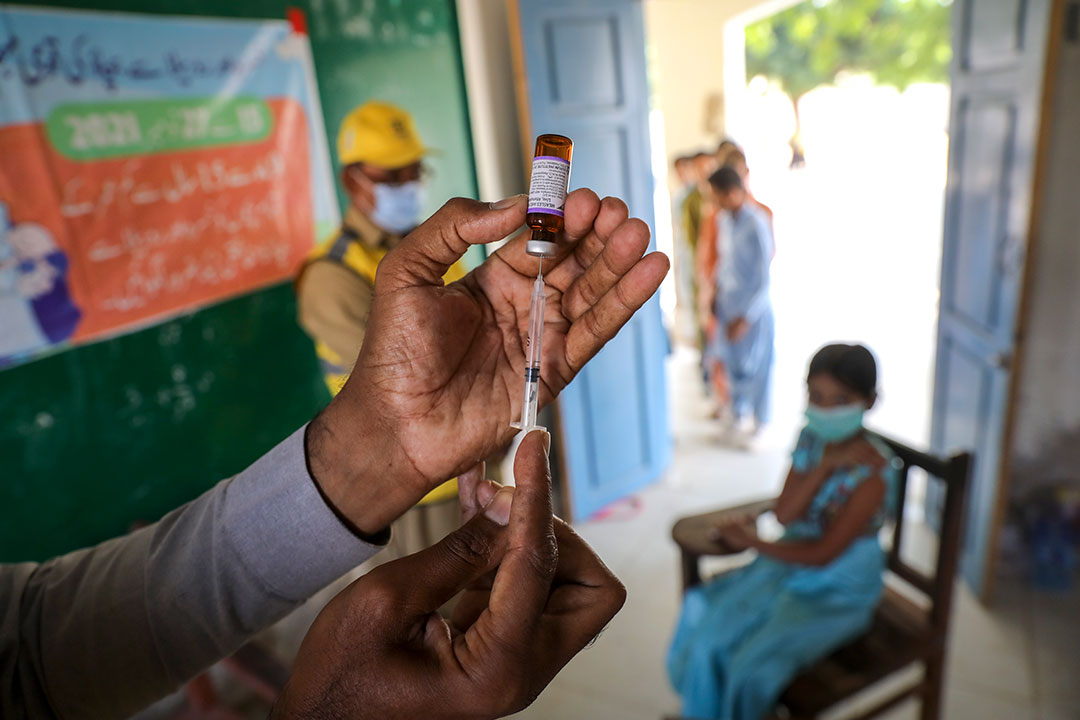
Gavi/2021/Asad Zaidi
A poster lists a staggering inventory of equipment and personnel: 100 million doses of MR vaccine, 100 million syringes, 9,000 fixed vaccination centres, 67,000 outreach teams, plus 900 mobile teams for the hardest-to-reach zones, 77,000 insulated blue vaccine carriers for 77,000 "skilled health workers" and their 77,000 team assistants.
The statistics resolve the scale, but lose the detail. A nationwide campaign like this one is finally only as big as it is small. After all, each locality has its own challenges, demands its own brand of problem-solving. Tharparkar, for instance, presents “access issues,” as Dr Kumar explains. “It’s a difficult geographical terrain because 97 percent of the area is desert here.”
This means that sometimes, here, the sprint to immunise Tharparkar’s kids against measles and rubella has to compromise on pace and use innovation to reach the hard to reach. Sometime before noon, not too far from Marno Vena, a vaccinator, a team assistant, and one of those 77,000 blue, shoulder-slung vaccine carrier boxes are making their way to their next outreach session. Progress is slow, and lilting, because their vehicle is a camel.
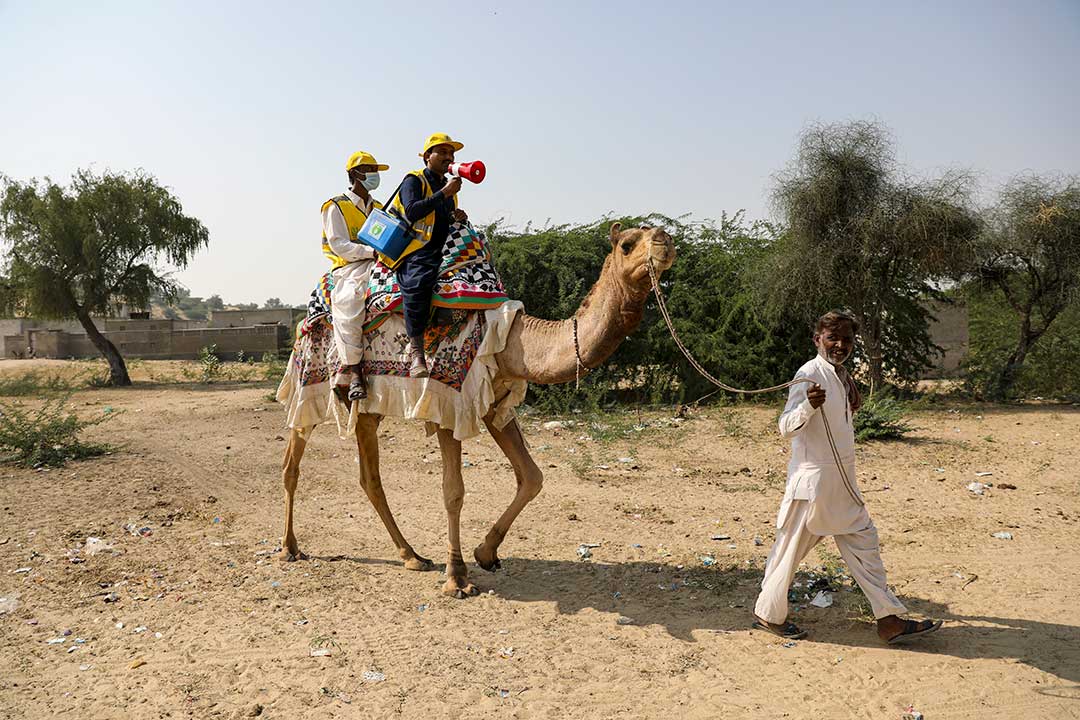
Gavi/2021/Asad Zaidi
More from Maya Prabhu
Recommended for you









